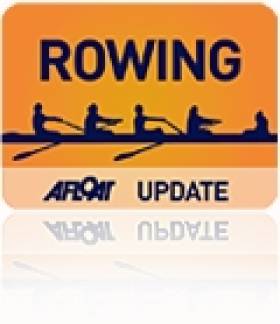Displaying items by tag: Cian Pidgeon
Coakley battles it out with Lynch to win Single Sculls
With the sculling championships coming up in September, there was great interest in the Division 1 and 2 competitions at the Limerick Regatta over the weekend with Skibbereen competing well to hold their Grand League top table position.
In Division 1 of the men's race, with 20 scullers declared, Sam Lynch of St Michael's, Limerick pipped Richard Coakley of Skibbereen in the heats by 0.48 seconds . The two former lightweight internationals battled it out in the final with Coakley exacting revenge in fine style putting Lynch into third spot with Cian Pidgeon, an intermediate from Castleconnell, putting in a fine performance to clinch second place.
In the men's Division 1 4x- race Skibbereen again showed the strength of their junior squad as they beat their club seniors and St Michael's seniors into second and third spot respectively. St Michael's took the Division 1 pairs from the aspiring intermediates from Cappoquin Rowing Club.
The double sculls competition was also keenly contested with several strong Skibbereen doubles in the heats but is was their juniors, fresh back from their silver medal at the European Junior Championships, who took first ahead of their club seniors with Clonmel and St Michaels taking second and third spot.
The Division 2 men's single sculls race, with 34 boats, was made up of novice, junior B and Junior 16 scullers. After the time trials it came down to the top four in Final A which was won by Prenderville from Muckross by 13 seconds from Lee RC, followed by Skibbereen and Workman's, who dead-heated for third place.
The women's Division 1 final was taken by Gillian Hosford of Skibbereen from a young Kate O'Brien from St Michaels. In the Division 2 final Corcoran-O'Hare (Shandon) beat Marie Piggott (Bantry) by a mere 0.43 seconds in a close finish.
In the Junior 14 and 15 ranks there was a massive entry of enthusiastic young rowers with the honours spread fairly widely around the clubs of Galway, Carrick on Shannon, Cork, Carlow, and Athlone. It was good to see new club Colaiste Chairáin from Croom in County Limerick show that, with ambition and hard work, you can get a rowing programme off the ground.
While the regatta entries were mainly Munster based, clubs from all four provinces were represented, reflecting an appetite, despite the traditional holiday season, for a serious August regatta in preparation for the small boat National Championships in September.
Click this link for Irish Rowing detailsClick this link for the Latest Rowing News























